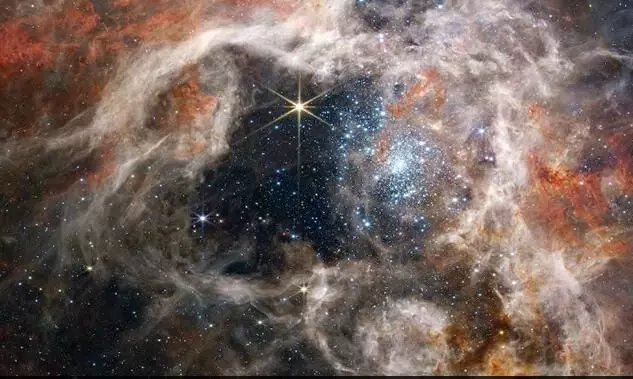
NASA telescope finds a giant space tarantula nebula
text_fieldsNASA's James Webb Telescope has captured the image of a nebula called 30 Doradus which is being described as a 'giant space tarantula'. It is 161,000 light years away from Earth and in the Large Magellanic Cloud galaxy.
30 Doradus is the largest and brightest star-forming region in the Local Group (aka the nearest galaxies to the Milky Way).
The American space agency shared the image on Instagram and wrote: "Take a moment to stare into the thousands of never-before-seen young stars in the Tarantula Nebula. NASA Webb reveals details of the structure and composition of the nebula, as well as dozens of background galaxies."
The caption further said that the stellar nursery of the nebula gets its nickname due to its long dusty filaments which resemble the limbs of a spider. It is also home to the hottest and most massive stars known to astronomers.
NASA in the Instagram post explained why this particular nebula is interesting to experts. The reason is that it is in a phase known as cosmic noon in which star formation is at its peak. "Unlike in our Milky Way, the Tarantula Nebula is producing new stars at a furious rate. Though close to us, it is similar to the gigantic star-forming regions from when the universe was only a few billion years old."
This allows astronomers to study the activity in the nebula and get as close as possible to witnessing the early days of the universe.
The Near-Infrared Camera (NIRCam) of the Webb telescope has allowed researchers to see the region in "new light, including tens of thousands of never-before-seen young stars that were previously shrouded in cosmic dust". The dense areas surrounding the stars are preventing erosion by powerful winds. This also leads to forming pillars.
NASA said the astronomers previously caught a very young star emerging from its dusty cocoon and they thought the star will be older and in the process of clearing the bubble around it. The Webb Telescope images showed that the star is only beginning to emerge from its pillar and still maintained an insulating cloud of dust around itself.
Further inspection revealed that protostars in the stellar nursery are still gaining mass.
























